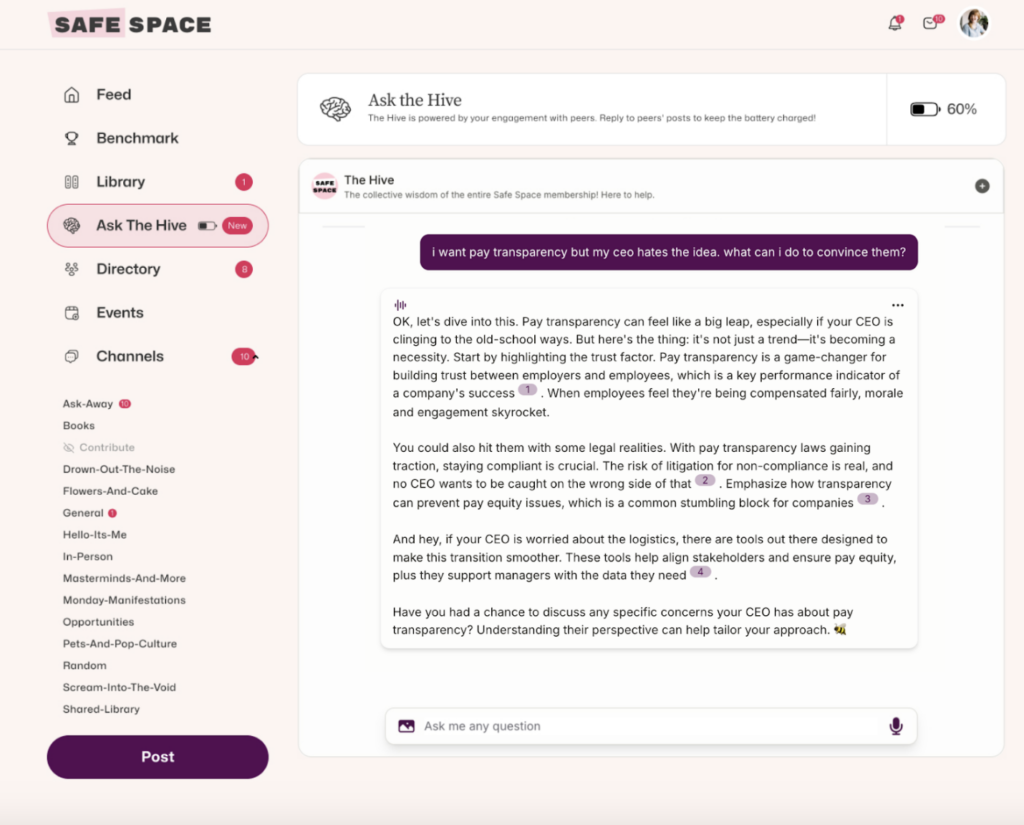
✍🏽 New at company surveys, how do I start addressing all the issues?
Context: 35 people, private company. Marketing.
📣 Tammi Burnett, Director of People and Culture @ Rainforest Action Network:
Speaking from personal experience, HR folks love to solve problems… like, ALL of the problems, all at once. This is just not humanly (or organizationally) possible. My suggestion would be to focus on solving 2-3 problems MAX at a time.
First, is there any really low hanging fruit or something you can solve quickly, easily, and cheaply? Do that first, and let your employees know you did it (Hi folks, we read in the survey that XYZ is an issue and here’s what we did about it). If there are more of these types of issues, make a list and start to tackle them one by one.
Next, pull out the bigger patterns or anything that’s repeated by multiple people; you may have to make some educated leaps to figure out what’s underpinning some of the issues. Choose one mid-range solve (doable but will take a time, effort, maybe money) and one long-range (doable but will take a lot of time and effort or is costly to solve) and start mapping out solutions for those. You can work on the mid and long range issues WHILE continuing to tackle those easy solves.
Be sure to communicate with your employees about what you’re working on and what you’ve solved to demonstrate that a) you listen, b) you care, c) you’re working on it. Good luck!
📣 Amber Nuckolls, HR Manager @ Eastern Data of Virginia:
All great points from Tammi! We do something similar and debrief with our team at the end of January, share results that showcase those themes and openly highlight the action items we’ve committed to address our struggle areas.
We have quarterly all staff meetings and we start by highlighting our progress towards those goals. Best advice… don’t try to take it all on yourself, if it’s something you can collaborate with someone else on, do it! If it’s not feasible to tackle this quarter or this year, work with leadership to pinpoint a more realistic timeline.
Prioritize what’s burning first!
Of course, we want to immediately attack all the problems but make sure you celebrate the wins too! Don’t toss out the good stuff.
I’ve also found it helpful to make a list of what went well and what could have gone better with the cycle and taking these into consideration with my planning of the upcoming ESAT cycle.
We’ve had great results from conducting these annually, we’ve had improved policy changes, benefits and have seen more openness from our team. Good luck!!!
Safe Space members can join this discussion here. Not a member yet? Apply to join here.

✍🏽 How are companies dealing with the backlash to DEI work in their organization?
JOIN 130K+ HR LEADERS
Get insights, learnings, and advice on how to build companies and cultures that people actually love.
No spam. Unsubscribe any time.
Context: About 1300 people. We are self funded but our employees are CA state employees. We have offices in multiple locations throughout the state, some in conservative parts of the state, some in liberal parts of the state. Creating an inclusive environment is our goal. We are getting some strong backlash to our DEI efforts (well-funded work here that is highlighted regularly)
📣 Margaret Spencer, General Manager @ Unexpected Tours & Training:
I am not dealing with backlash in my org, but that’s because I work for an org that specifically does DEI events. We’ve seen a small dip in leads for DEI events so far in 2025, but actually what we’ve found is that when society is volatile or there’s a lot of controversy happening in the news, companies tend to rally around making sure employees feel seen, heard, and part of the culture (and make an effort to do more DEI events). Belonging is a big part of DEI even though it doesn’t always get included in the term.
Could you rephrase DEI within your org to include belonging?
Frankly, it’s puzzling that companies would put DEI under fire, ever, because if decision makers are looking at data, projections, and growth, they’d know that it’s counterintuitive/counterproductive to put DEI on the back burner. All studies show that companies that put an emphasis on DEI have less employee turnover, larger profits, and can expand into more market share.
In a LinkedIn study, companies with a DEI team were 22% more likely to be seen as “an industry-leading company with high-caliber talent” and 12% more likely to be seen as an “inclusive workplace for people of diverse backgrounds.” A Boston Consulting Group study found that companies with above-average diversity in their leadership teams reported innovation revenue at rates 19 percentage points higher than those with below-average diversity in management.
We work with government employees in many states and what we’ve seen is that part of the difficulty is not necessarily DEI, but actually the entire company culture, including communication, belonging, and how to address hard topics. Tiny steps forward are what we’ve seen are necessary, rather than large strides forward.
I can’t speak to what pushback you’re getting, but I wonder if it’s pushback or just really slow progress? Are the programs you’re using fresh and innovative? Engaging? There’s not a lot of research to track if DEI programs are successful, unfortunately, but we do know that “one and done sessions” are not helpful. It takes longitudinal programs for a DEI program to be successful.
Monica Wang summed it up in an interview she did with The Brink for BU, “Transformational DEI and antiracism work is a marathon, it’s not a sprint.”
Best of luck to you!
Safe Space members can join this discussion here. Not a member yet? Apply to join here.


